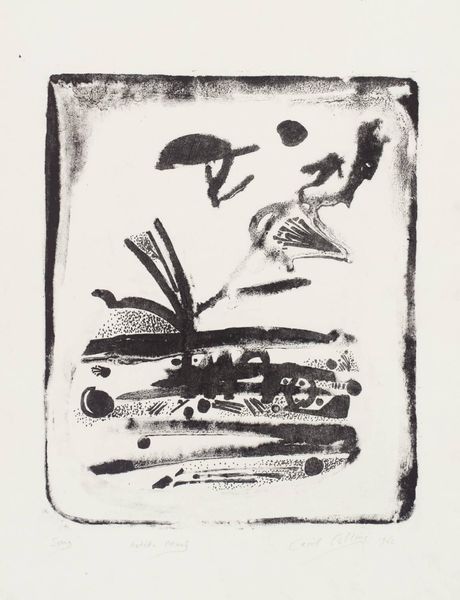
drawing, print, paper, ink, woodcut
#
drawing
# print
#
landscape
#
figuration
#
paper
#
ink
#
woodcut
#
line
Dimensions: 45 mm (height) x 50 mm (width) (billedmaal)
Editor: So, this is "En and" by Joakim Skovgaard, created sometime between 1865 and 1870. It's a small print, a woodcut in ink on paper, currently at the SMK. It’s simple, almost like a little emblem. What’s your take on it? Curator: Well, immediately I’m drawn to the raw quality of the woodcut. Think about the labor involved. The artist is literally carving away material to create the image. It isn’t just about representing a duck; it's about the physical act of production and what that says about artmaking in that period. Does it look more like a craft object than fine art, at first glance? Editor: It does, yes. It seems so...humble, somehow. But does the medium, a print, complicate that reading? Curator: Absolutely. The printmaking process allows for reproduction, distribution. We need to consider the socio-economic implications. Who had access to these prints? Were they disseminated widely? Was this a way to bring images, even art, to a broader audience beyond the elite? Also, consider the line work—stark, functional. It serves a purpose, representing form efficiently, and speaking to functionality rather than aestheticism. Editor: I see. So, it's not just about the duck itself, but also about the *how* and *why* of its creation and distribution, and what the inexpensive materiality would allow. Is that right? Curator: Exactly! We should investigate the type of paper used. Is it mass-produced? Was it intended for high-quality artworks? These "minor" details can change how we perceive it. The "duckness" is just the beginning. The materials and production speak volumes about artistic intentions and social possibilities in 19th-century Denmark. Editor: That’s really given me a different way to see something that I initially saw as so simple. It makes you think about what other 'craft' artworks we may miss the significance of in their materials. Curator: Precisely! Art, in a way, becomes a document, not just to be observed, but to be studied.
Comments
No comments
Be the first to comment and join the conversation on the ultimate creative platform.













